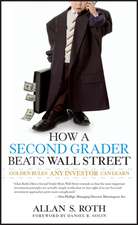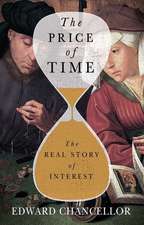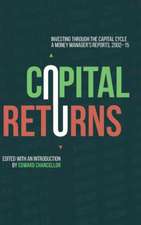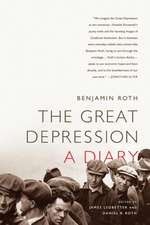Devil Take the Hindmost: A History of Financial Speculation
Autor Edward Chancelloren Limba Engleză Paperback – 31 mai 2000 – vârsta de la 18 ani
Preț: 114.05 lei
Nou
21.82€ • 22.79$ • 18.06£
Carte disponibilă
Livrare economică 14-28 martie
Specificații
ISBN-10: 0452281806
Pagini: 400
Dimensiuni: 152 x 228 x 23 mm
Greutate: 0.42 kg
Editura: Plume Books
Locul publicării:New York, NY, United States
Textul de pe ultima copertă
Devil Take the Hindmost is a lively, original, and challenging history of stock market speculation from the seventeenth century to the present day. Edward Chancellor traces the origins of the speculative spirit back to ancient Rome and chronicles its revival in the modern world: from the tulip scandal of 1630s Holland, to "stockjobbing" in London's Exchange Alley (where wine sold at auction by an "inch of a candle"), to the infamous South Sea Bubble of 1719, which prompted investor Sir Isaac Newton to comment, "I can calculate the motion of heavenly bodies, but not the madness of people". Here are brokers underwriting risks that included highway robbery and the "assurance of female chastity"; credit notes and lottery tickets circulating as money; wise and unwise investors from Alexander Pope and Benjamin Disraeli to Ivan Boesky and Hillary Rodham Clinton.From the Gilded Age to the Roaring Twenties, from the railway mania of nineteenth-century America to the crash of 1929, from junk bonds and the Japanese bubble economy to day-traders of the Information Era, Devil Take the Hindmost tells a fascinating story of human dreams and folly through the ages.
Recenzii
Descriere
Is your investment in that new Internet stock a sign of stock market savvy or an act of peculiarly American speculative folly? How has the psychology of investing changed--and not changed--over the last five hundred years? Edward Chancellor examines the nature of speculation--from medieval Europe to the Tulip mania of the 1630s to today's Internet stock craze. A contributing writer to The Financial Times and The Economist, looks at both the psychological and economic forces that drive people to "bet" their money in markets; how markets are made, unmade, and manipulated; and who wins when speculation runs rampant. Drawing colorfully on the words of such speculators as Sir Isaac Newton, Daniel Defoe, Ivan Boesky, and Hillary Rodham Clinton, Devil Take the Hindmost is part history, part social science, and purely illuminating: an erudite and hugely entertaining book that is more timely today than ever before.
Notă biografică
Cuprins
Preface: Devil Take the Hindmost
1. "This Bubble World": The Origins of Financial Speculation 2. Stockjobbing in 'Change Alley: The Projecting Age of the 1690s 3. "The Never-to-Be-Forgot or Forgiven South-Sea Scheme" 4. Fool's Gold: The Emerging Markets of the 1820s 5. "A Ready Communication": The Railway Mania of 1845 6. "Befooled, Bewitched and Bedeviled": Speculation in the Gilded Age 7. The End of a New Era: The Crash of 1929 and Its Aftermath 8. Cowboy Capitalism: From Bretton Woods to Michael Milken 9. Kamikaze Capitalism: The Japanese Bubble Economy of the 1980s
Epilogue: The Case of the Rogue Economists
Notes For Further Reference Acknowledgments Index


















